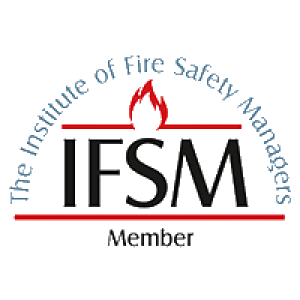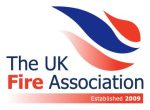Introduction: Fire Safety and Health & Safety Integration
Fire safety regulations in the UK are intrinsically linked with broader health and safety legislation, forming an integrated approach to workplace protection.
Under the Health and Safety at Work etc. Act 1974, employers have a fundamental duty to ensure, so far as is reasonably practicable, the health, safety and welfare of employees and others who may be affected by their work activities.
Fire safety represents a critical component of this overarching obligation.
The Management of Health and Safety at Work Regulations 1999 require employers to conduct risk assessments for all workplace hazards, with fire safety assessments forming a specialised subset of this requirement.
This integrated approach means that fire safety cannot be considered in isolation from other workplace risks – evacuation procedures must account for disabled employees, fire safety training must be part of comprehensive health and safety induction programs, and fire prevention measures must be coordinated with other risk control measures.
The “responsible person” concept in fire safety legislation mirrors the “duty holder” responsibilities in health and safety law, creating a unified framework where senior management bears legal responsibility for both fire safety and general workplace safety.
This dual responsibility ensures that fire safety considerations are embedded within overall business risk management strategies rather than treated as standalone compliance requirements.
- Primary Legislative Framework
- Key Requirements for All Businesses
- Specific Requirements for High-Rise Buildings
- Multi-Occupied Residential Buildings
- Building Regulations and Fire Safety Design
- Training and Competency Requirements
- Official Guidance Documents
- Enforcement and Compliance
- Timeline of Implementation
- Key Changes Summary
- Summary and Future Outlook
Primary Legislative Framework
1. The Regulatory Reform (Fire Safety) Order 2005 (FSO)
Official Link: https://www.legislation.gov.uk/uksi/2005/1541
The Regulatory Reform (Fire Safety) Order 2005 (FSO) is the main piece of legislation governing fire safety in buildings in England and Wales. The FSO applies to all workplaces and the common parts of buildings containing 2 or more domestic premises. All premises used for non-domestic purposes, with a few small exceptions, fall under these regulations.
The FSO fundamentally changed the regulatory landscape by shifting from prescriptive fire certificates to a risk-based approach. This order places the onus on business owners and employers to assess fire risks and implement appropriate measures, rather than simply following predetermined rules. The legislation applies to virtually all non-domestic premises including offices, shops, factories, warehouses, hotels, boarding houses, factories, and shared areas of blocks of flats and houses in multiple occupation.
Key features of the FSO include:
- Risk-based approach requiring ongoing assessment and management
- Duty to cooperate and coordinate in multi-occupied premises
- Requirements for fire safety training and information provision
- Powers for fire and rescue authorities to enforce compliance
- Criminal sanctions for non-compliance including imprisonment
2. Fire Safety Act 2021
Official Link: https://www.legislation.gov.uk/ukpga/2021/24/contents
The Act makes provision about the application of the Regulatory Reform (Fire Safety) Order 2005 where a building contains two or more sets of domestic premises; and confers power to amend that order in future for the purposes of changing the premises to which it applies. The Fire Safety Act 2021 received Royal Assent on 29 April 2021 and commenced on 16 May 2022.
This Act was a direct response to the Grenfell Tower tragedy and clarified that fire safety responsibilities extend to external walls, flat entrance doors, and any common parts of buildings containing flats. It explicitly brought within scope areas that had previously been subject to interpretation, ensuring comprehensive coverage of all building elements that could affect fire safety.
The Act also provides the Secretary of State with powers to amend the FSO in future, allowing for more responsive adaptation to emerging fire safety challenges and technological developments without requiring new primary legislation.
3. Fire Safety (England) Regulations 2022
Official Links:
- Main regulations: https://www.gov.uk/government/publications/fire-safety-england-regulations-2022
- Guidance document: https://www.gov.uk/government/publications/check-your-fire-safety-responsibilities-under-the-fire-safety-england-regulations-2022
The Fire Safety (England) Regulations 2022 have been introduced as an important step towards implementing the recommendations of the Grenfell Tower Inquiry Phase 1 report. The Regulations that apply to England only are being introduced under Article 24 of the Regulatory Reform (Fire Safety) Order 2005 (Fire Safety Order) and came into force on 23 January 2023.
These regulations establish specific requirements for:
- High-rise residential buildings (18+ metres or 7+ storeys)
- Information provision to fire and rescue services
- Resident notification systems and procedures
- Enhanced record-keeping and documentation requirements
- Regular testing and maintenance schedules for fire safety systems
4. Building Safety Act 2022 (Section 156)
From 1 October 2023, new fire safety legislation came into effect which imposed new duties on businesses and buildings owners. The changes in legislation are also known as Section 156 of the Building Safety Act 2022.
Section 156 represents the most significant expansion of fire safety documentation requirements in decades, removing the previous exemption for smaller businesses and establishing universal record-keeping obligations. This change reflects the understanding that fire risks exist regardless of business size and that proper documentation is essential for effective fire safety management.
Key Requirements for All Businesses
Enhanced Fire Risk Assessment Requirements
Effective from 1 October 2023:
All businesses will need to record a fire risk assessment and fire safety arrangements in full – regardless of the number of employees, and size or type of business. The previous requirement to have a written fire risk assessment only applied in certain circumstances (e.g. where the responsible person employs five or more persons).
Fire risk assessments must now include:
- Detailed identification of fire hazards (sources of ignition, fuel, oxygen)
- Assessment of persons at risk, with particular attention to vulnerable individuals
- Evaluation of existing fire safety measures and their adequacy
- Identification of required improvements and prioritization of actions
- Regular review procedures and update mechanisms
- Emergency procedures and evacuation arrangements
- Training requirements and schedules
The assessment must be “suitable and sufficient” – meaning it should be proportionate to the risk level but comprehensive enough to identify all significant fire hazards and the measures needed to protect people.
Responsible Person Duties
Under the FSO, the “Responsible Person” (typically the employer, building owner, or occupier) must:
Core Obligations:
- Conduct comprehensive fire risk assessments and keep them under regular review
- Provide staff information, fire safety instruction and training
- Implement and maintain appropriate fire safety measures
- Establish clear emergency procedures and evacuation plans
- Ensure effective maintenance of fire safety equipment and systems
- Cooperate with other responsible persons in shared or multi-occupied buildings
- Consult with employees on fire safety matters
Specific Measures Required:
- Installation and maintenance of fire detection and warning systems
- Provision of appropriate firefighting equipment
- Ensuring adequate means of escape that are kept clear and well-lit
- Implementation of emergency lighting systems where necessary
- Establishment of safe assembly points and roll-call procedures
- Development of fire safety management systems and procedures
Multi-Occupied Buildings
There are increased requirements for cooperation and coordination between Responsible Persons in multi occupied buildings. Any departing Responsible Persons must take reasonable steps to share all relevant fire safety information with the incoming Responsible Persons. This is to maintain a chain of fire safety information across the whole of a building’s lifetime.
This cooperation must include:
- Sharing fire risk assessment information and findings
- Coordinating emergency procedures and evacuation arrangements
- Establishing communication protocols for fire safety matters
- Joint training exercises and emergency drills where appropriate
- Maintenance of common fire safety systems and equipment
- Information sharing about building modifications that could affect fire safety
Specific Requirements for High-Rise Buildings
Fire Safety (England) Regulations 2022 Requirements
For buildings over 18 metres or 7 storeys:
The Fire Safety (England) Regulations 2022, which came into force on 23 January 2023, set out the information that the RP must provide to local fire and rescue services. This includes the requirement for RP’s of buildings over 18 metres, or 7 storeys in height, to provide information.
The regulations make it a requirement in law for responsible persons of high-rise residential buildings to provide information to fire and rescue services to assist them in planning for and responding to a fire in their building.
Required Information Includes:
- Building plans showing layout, escape routes, and fire safety installations
- Details of fire safety systems including detection, alarm, and suppression systems
- Information about building materials, particularly external wall systems
- Resident information and any special evacuation requirements
- Contact details for responsible persons and key personnel
- Details of any ongoing construction or maintenance work affecting fire safety
Building Safety Regulator (BSR)
Under the new laws the Building Safety Regulator (BSR) will regulate high-rise buildings. These are buildings with seven or more storeys or that are 18 metres or higher.
The BSR operates as part of the Health and Safety Executive and has wide-ranging powers including:
- Registration and oversight of high-risk buildings
- Setting standards and guidance for building safety
- Investigating serious building safety failures
- Enforcement powers including prohibition notices and prosecution
- Oversight of building safety managers and their competence
Multi-Occupied Residential Buildings
Responsible persons of multi-occupied residential buildings with two or more sets of domestic premises are required to: Provide fire safety information to their residents on how to report a fire and what a resident must do once a fire has occurred. Provide residents with information relating to fire safety arrangements.
Specific Resident Information Requirements:
- How to report a fire and raise the alarm
- Evacuation procedures and escape routes
- Assembly point locations and procedures
- Contact details for reporting fire safety concerns
- Information about fire doors and their importance
- Guidance on fire prevention in individual units
- Details of any planned fire drills or testing activities
Building Regulations and Fire Safety Design
Approved Document B (Fire Safety)
Link: https://www.gov.uk/government/publications/fire-safety-approved-document-b
Approved Document B provides technical guidance on fire safety requirements for building design and construction.
Approved Document B covers:
- Means of warning and escape including travel distances and exit widths
- Internal fire spread (linings) and surface spread of flame requirements
- Internal fire spread (structure) and compartmentation principles
- External fire spread and separation distances
- Access and facilities for the fire and rescue service
- Special premises requirements for specific building types
This guidance is particularly relevant for businesses planning building modifications, extensions, or change of use applications, as these may trigger building regulation requirements that must be satisfied alongside ongoing fire safety obligations.
Training and Competency Requirements
Staff Fire Safety Training
All employees must receive appropriate fire safety training that includes:
- Basic fire prevention measures and good housekeeping
- Recognition of fire hazards and reporting procedures
- Alarm procedures and emergency protocols
- Evacuation procedures including use of escape routes
- Assembly point procedures and roll-call arrangements
- Use of firefighting equipment where appropriate
- Specific roles and responsibilities during fire emergencies
Responsible Person Competency
Responsible persons must ensure they have sufficient knowledge and understanding to:
- Conduct or oversee suitable fire risk assessments
- Implement and maintain appropriate fire safety measures
- Understand relevant legal requirements and industry standards
- Recognize when specialist advice or external expertise is needed
- Effectively manage fire safety in their specific business context
Official Guidance Documents
Government Guidance Collection
Link: https://www.gov.uk/government/collections/fire-safety-legislation-guidance-for-those-with-legal-duties
This collection provides guidance for those with legal duties under fire safety legislation.
Key Guidance Documents Include:
- Fire safety risk assessment guides for different premises types
- Guidance on fire safety in the workplace
- Sleeping accommodation guidance for hotels and similar premises
- Small and medium places of assembly guidance
- Large places of assembly guidance
- Factories and warehouses guidance
Industry-Specific Resources
Additional guidance is available for specialized sectors including:
- Healthcare premises and hospitals
- Educational establishments
- Entertainment and assembly venues
- Industrial and storage facilities
- Transport premises and infrastructure
- Historic buildings and heritage sites
Enforcement and Compliance
Fire and rescue services enforce various legislation, chiefly around fire safety, including the Regulatory Reform (Fire Safety) Order 2005 and the Fire Safety (England) Regulations 2022.
Enforcement Powers
Fire and rescue authorities have extensive powers including:
- Rights of entry and inspection of premises
- Power to require information and documentation
- Serving of enforcement notices requiring remedial action
- Prohibition notices preventing use of dangerous premises
- Prosecution for serious breaches of fire safety law
- Powers to take emergency action to make premises safe
Penalties for Non-Compliance
- Summary conviction: fines up to £5,000 and/or six months imprisonment
- Conviction on indictment: unlimited fines and/or up to two years imprisonment
- Corporate liability for senior managers and directors in serious cases
- Potential civil liability for fire-related injuries or damage
Timeline of Implementation
- 29 April 2021: Fire Safety Act 2021 received Royal Assent
- 16 May 2022: Fire Safety Act 2021 commenced
- 23 January 2023: Fire Safety (England) Regulations 2022 came into force
- 1 October 2023: Building Safety Act 2022 Section 156 requirements came into effect
Key Changes Summary
The recent legislative changes have significantly expanded fire safety requirements, particularly:
- Universal written fire risk assessments – now required for all businesses regardless of size, removing the previous five-employee threshold and ensuring comprehensive documentation across all commercial premises
- Enhanced information sharing between responsible persons in multi-occupied buildings, creating formal cooperation requirements and mandating knowledge transfer when responsibilities change hands
- Specific high-rise building requirements with BSR oversight, establishing a dedicated regulatory regime for buildings presenting the highest risk to occupants
- Increased resident information obligations for multi-occupied residential buildings, ensuring residents have clear guidance on fire safety procedures and reporting mechanisms
- Mandatory fire and rescue service information provision for certain building types, enabling more effective emergency planning and response
- Strengthened enforcement framework with enhanced powers for fire and rescue services and increased penalties for non-compliance
Summary and Future Outlook
The current UK fire safety regulatory framework represents the most comprehensive and stringent approach to fire safety management in the country’s history. The integration of fire safety with broader health and safety obligations creates a unified approach to workplace protection that requires businesses to adopt systematic risk management approaches.
The shift from prescriptive compliance to risk-based management places greater responsibility on business owners and employers to understand their specific fire risks and implement appropriate measures. This approach is more demanding but ultimately more effective, as it requires consideration of the unique characteristics of each premises and its use.
The emphasis on competency and training reflects recognition that effective fire safety depends not just on physical measures but on human behavior and organizational culture. Businesses must invest in developing internal expertise while recognizing when external specialist advice is necessary.
Recent legislative changes have removed any remaining ambiguity about fire safety responsibilities and established clear expectations for documentation, cooperation, and information sharing. The universal requirement for written fire risk assessments ensures that even the smallest businesses must formally consider their fire safety obligations.
Looking forward, the regulatory framework is likely to continue evolving in response to emerging risks, technological developments, and lessons learned from fire incidents. The Building Safety Regulator’s role may expand beyond high-rise buildings, and there may be increased focus on the competency of those carrying out fire risk assessments and managing fire safety.
Businesses should view compliance not as a burden but as an investment in operational resilience and stakeholder protection. Effective fire safety management reduces insurance costs, protects business continuity, ensures legal compliance, and demonstrates corporate responsibility. The integration of fire safety with broader health and safety and business risk management creates opportunities for efficient, coordinated approaches that deliver value beyond mere regulatory compliance.
The key to successful fire safety management lies in understanding that it is an ongoing process requiring regular review, continuous improvement, and active engagement with changing circumstances. Businesses that embrace this approach will not only meet their legal obligations but create safer, more resilient operations that protect their most valuable assets – their people and their future.










